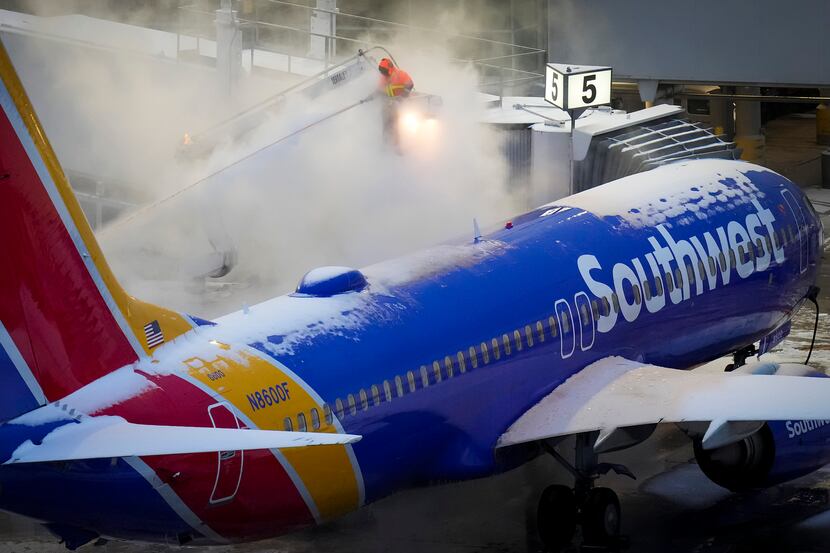Southwest Airlines unveiled the preliminary findings from the carrier’s work with aviation consulting firm Oliver Wyman on Tuesday.
Bob Jordan, Southwest Airlines’ CEO, unveiled a three-part plan to create operational fixes, three months after the December crisis in which it canceled 16,700 flights over 10 days during the holiday travel period.
“Now, we expect to mitigate the risk of an event of this magnitude ever happening again,” Jordan said in a release. “Work is well underway implementing action items to prepare for next winter — with some items already completed.”
The plan largely sticks to the narrative company officials have offered over the last three months — that it was unprepared for a winter storm that hit two key airports and that its technology systems were unprepared for the massive number of pilot and flight attendant reassignments that eventually cascaded through its nationwide network.
The three-part plan focuses on improving winter operations, accelerating operational investments and cross-team collaborations.
Fighting the cold
Winter operations proved to be an issue when Winter Storm Elliot had greater severity than what Southwest had planned for. At Denver International Airport and Chicago Midway International Airport, 25% of crew members were impacted by flight cancellations.
To solve these problems, Southwest plans to buy more deicing trucks, secure more deicing pads and deicing fluid capacity at important airports and purchase more engine covers and heaters for cold weather.
Jordan told conference attendees on Tuesday that the carrier is in the process of purchasing five deicing trucks for Denver and five for Chicago Midway.
It’s also going to take a look at winter staffing levels, noting how grounds operations employees were limited in extreme temperatures. The company also said that it will add a new weather application to provide crew members with real-time weather indicators to help deicing holdover times, or the required time before an aircraft must be deiced again before departure.
Leaning in to tech
Southwest is looking to prioritize tools and technology that will allow for greater recovery during extreme events. It’s budgeting more than $1.3 billion on upgrades and maintenance to information technology systems this year.
Andrew Watterson, Southwest’s chief operating officer, fielded questions from lawmakers in February at a U.S. Senate hearing in Washington. It was where he announced an upgrade to the company’s crew scheduling software would be put in place that same week.
Watterson said in a release that he was confident in Southwest’s path forward and believes that the carrier’s “best days are ahead.”
The carrier has updated its crew rescheduling software. It is looking to enhance its electronic crew notification system, upgrade its phone system and its customer support and services phone system. It’s also planning an upgrade to its employee mobility tools. These upgrades will focus on surge protection and efficiency during high call volume times.
Working together
The carrier is continuing with plans to align network planning and network operations control teams under one senior leader to execute operational plans. It’ll also look to update its leading indicators dashboard, improve alert and decision support tools and look at upgrading capabilities to better integrate aircraft and crew recovery optimization.
Southwest is continuing an existing five-year operational modernization plan, which began in 2022. The plan focuses on operational investments and organizational alignment to support customers and employees.
Southwest believes it had the technology and staffing to handle irregular operations, the release said, but the “pace and breadth of disruptions” strained the carrier. Jordan reaffirmed that the carrier stands behind its business model and point-to-point network, saying its disruption review has not revealed the need for any structural changes there.

